The restaurant industry is known for having very slim profit margins. According to Restaurantowner.com, the pre-tax average net profit for independent fast-casual (quick service) restaurants is 6-7% and 4-5% for full-service restaurants. When working with such small margins, it is essential to the health of your business to track prime costs. Analyzing these costs can help you decide on areas that need adjustments, whether through cutting costs or raising prices, to increase profitability. Many owners and managers know this but are unaware of what is included in prime costs and how to analyze them.
What are Prime Costs?
Prime Costs = Cost of Sales + Labor
Cost of Sales includes, and can be broken out by, the cost of the following:
- Food and paper (for Quick Service Restaurants (QSR)
- Soft beverages
- Liquor
- Beer
- Wine
- Merchandise
If a restaurant has delivery and takeout, this also includes packaging, utensils, etc. that are not part of your dine-in cost of sales.
Labor includes the following:
- Management salaries and wages
- Staff salaries and wages
- Employee benefits
Many operators mistakenly exclude employee benefits when calculating labor costs, including payroll taxes, because they track labor costs using their POS, which typically excludes benefits. Labor is further separated between the back of house, front of house, catering, administrative, payroll taxes, insurance, retirement, etc.
Prime Cost as a Percentage of Sales
Prime costs as a percentage of sales (prime costs / total sales) determine how much is left over for the rest of your expenses and profitability. For example, if the ratio is 80%, you have 20 cents per dollar for the rest of your expenses, including rent, insurance, interest, paying yourself, etc. The following chart provides benchmarks you can use to compare (provided by Restaurantowner.com):
| Prime Cost as a Percentage of Sales | ||
| Full-Service | Quick-Service | |
| Maximum | 65% | 60% |
| Average | 60-65% | 55-60% |
| Low | 56-59% | 51-54% |
| Best in Class | 55% | 50% |
As you can see, you want your prime cost ratio to be below 60% and no more than 65% of sales. You should not aim for too low, or it could compromise future profitability. For instance, if labor costs were decreased significantly due to layoffs, this could reduce customer satisfaction and sales.
How to Analyze Your Prime Costs
Let’s say your restaurant has a prime cost as a percentage of sales ratio of 75%. Upon analyzing your prime costs, you determine this is due to an increase in the cost of food. If you were to have recipe costing software, such as MarginEdge or xtraCHEF, you would be able to track ingredients used in each recipe and be notified when the price increases above a set threshold. You might realize that a certain ingredient price has increased, therefore, you could either use alternative ingredients, remove that menu item, give smaller portions, or raise the price.
The price increase may also be due to another food cost problem that has nothing to do with the cost of ingredients, such as waste or portion control issues. One way to catch this is to use your recipe costing software to calculate your “Ideal Food Cost” (also known as Theoretical Cost) and compare that to your Actual Food Cost.
You can do this using the following steps:
- Use your recipe costing software to calculate the quantity and cost for each ingredient used in a particular recipe to determine the total cost of that recipe, which can then be divided by the sales price for that menu item to determine the food cost %.
- Calculate your Ideal Food Cost. This is the cost expected for a certain sales mix assuming “ideal” circumstances (meaning no waste, proper portioning, etc.)
- Compare this Ideal Food Cost to your Actual Cost. Your recipe costing software should provide this report (for example, MarginEdge has this information in its theoretical usage report).
If Actual Food Costs exceed your Ideal Food Costs, this analysis can help identify waste, portion control, receiving problems (dishonest delivery drivers, inaccurate weights), theft, unrecorded sales, accounting errors, or outdated menu costs. Check out How to Use Financial Data to Achieve Ideal COGS in 3 Steps to learn more about comparing actual COGS vs theoretical COGS.
Your prime costs could also have increased due to the cost of labor. When looking deeper into the data, you might realize that there is excessive overtime due to labor shortage, and you might need to consider hiring more staff. If you have staff on fixed salaries, you might increase hours worked or open an extra day. These are just some ways the data can be analyzed weekly to make important decisions.
Prime Cost Reporting
Here at The Fork CPAs, we provide weekly, biweekly, and monthly insight into your prime costs directly from the reconciled financials prepared by our team in Quickbooks Online and Restaurant365. We leverage software such as Fathom, xtraCHEF, and Marginedge to streamline the transfer of information from operations to accounting and combine the data into a beautiful report.
To provide benefit, trends in prime costs need to be analyzed over different reporting periods (ideally week over week). Unlike rent, insurance, and other relatively fixed expenses, prime costs can fluctuate significantly from one week to the next. These costs should not be ignored to increase or even maintain profitability for your restaurant. Restaurantowner.com, on average, sees that prime costs decrease 2 to 4 percentage points just by reviewing them weekly and responding in time. If you generate $3m/year in revenue, that is anywhere from $60k/year to $120k/year in savings, an amount that could make or break your business model.
Finally, it is extremely important to ensure the data being used to prepare these reports is reliable due to proper accounting and bookkeeping.
If you need any assistance, please feel free to contact us.
By Marisa Parker, CPA | Published on 10/3/2021







